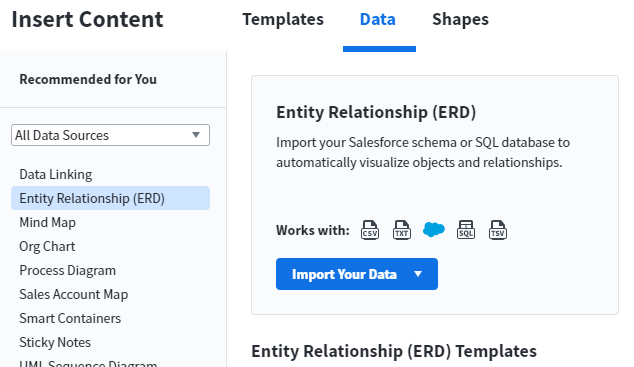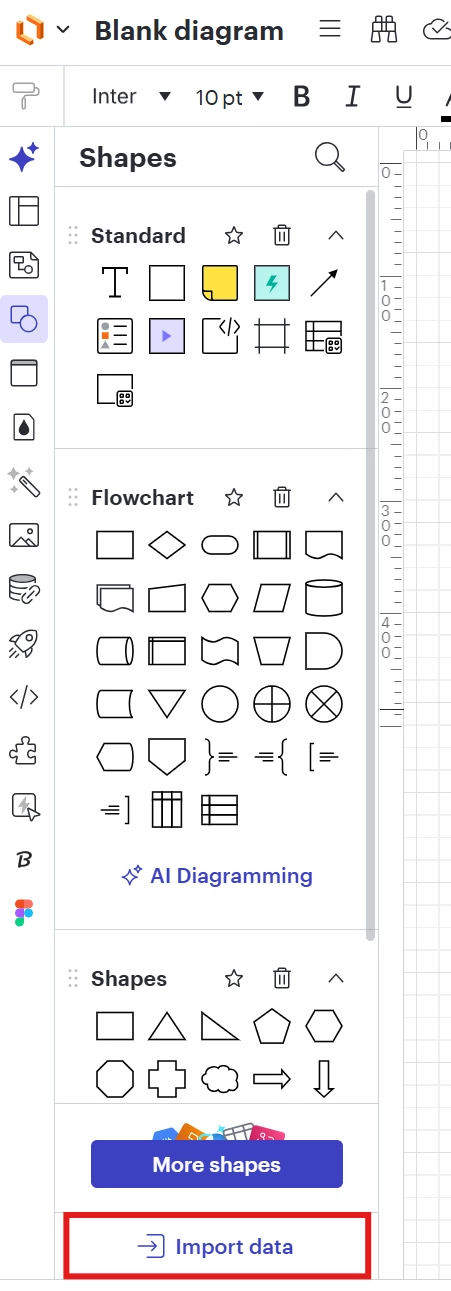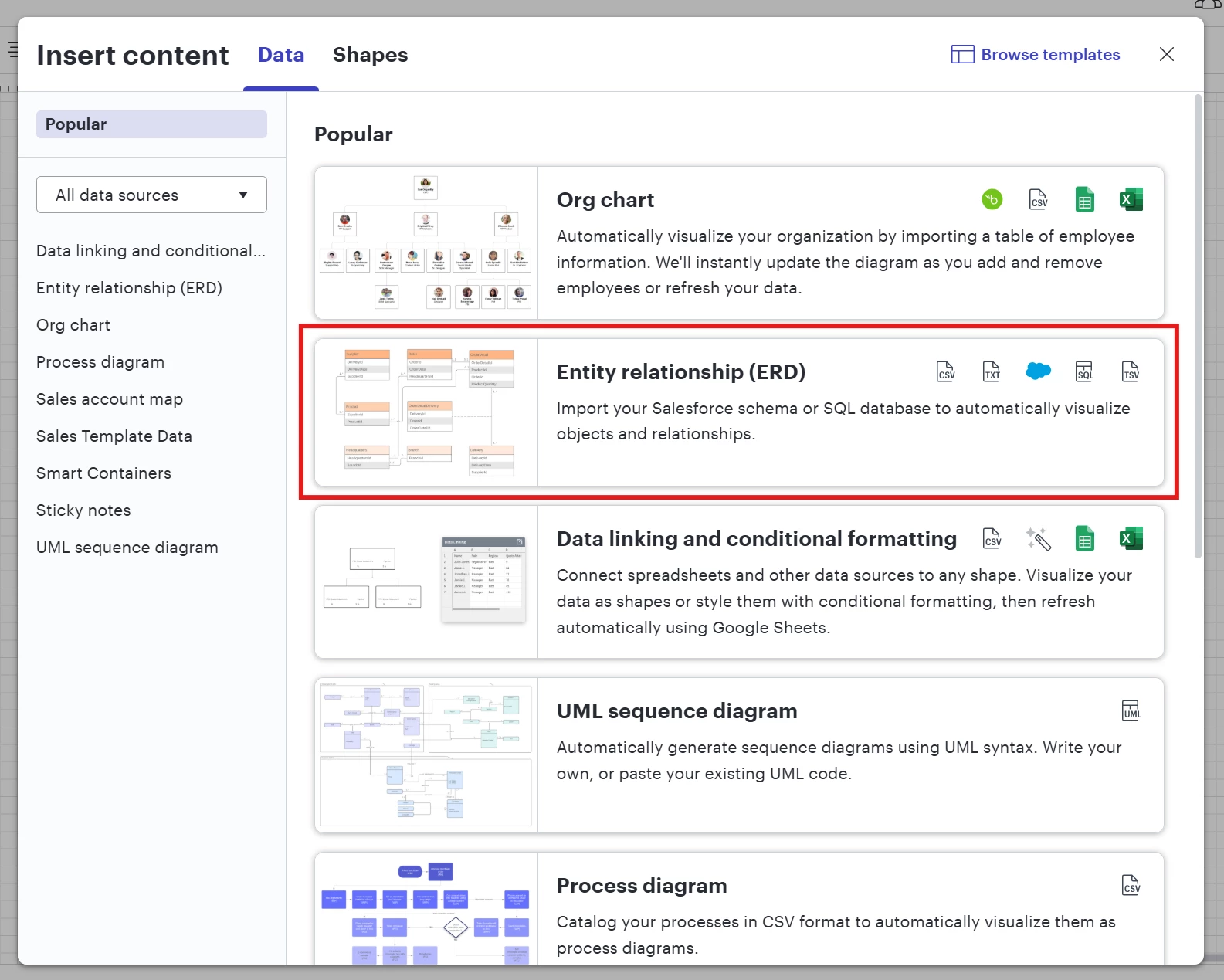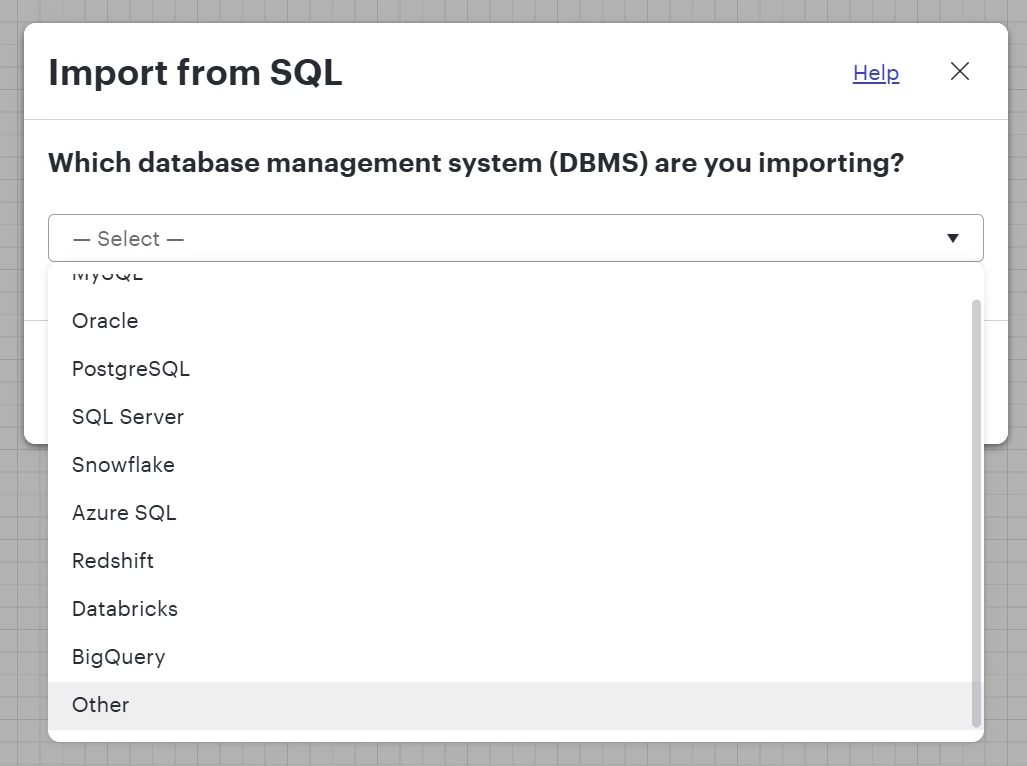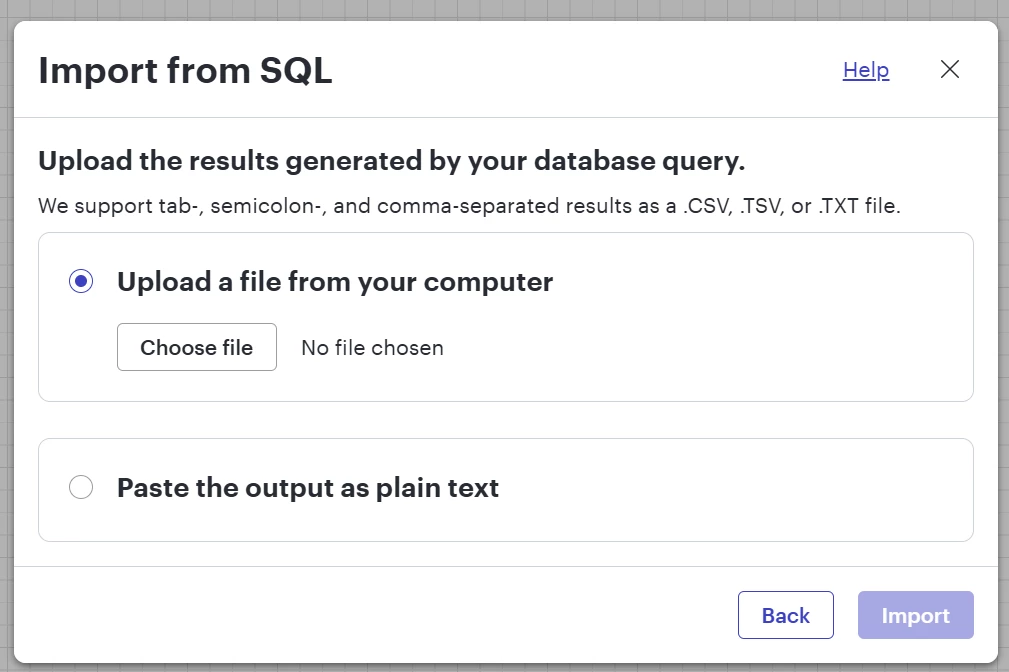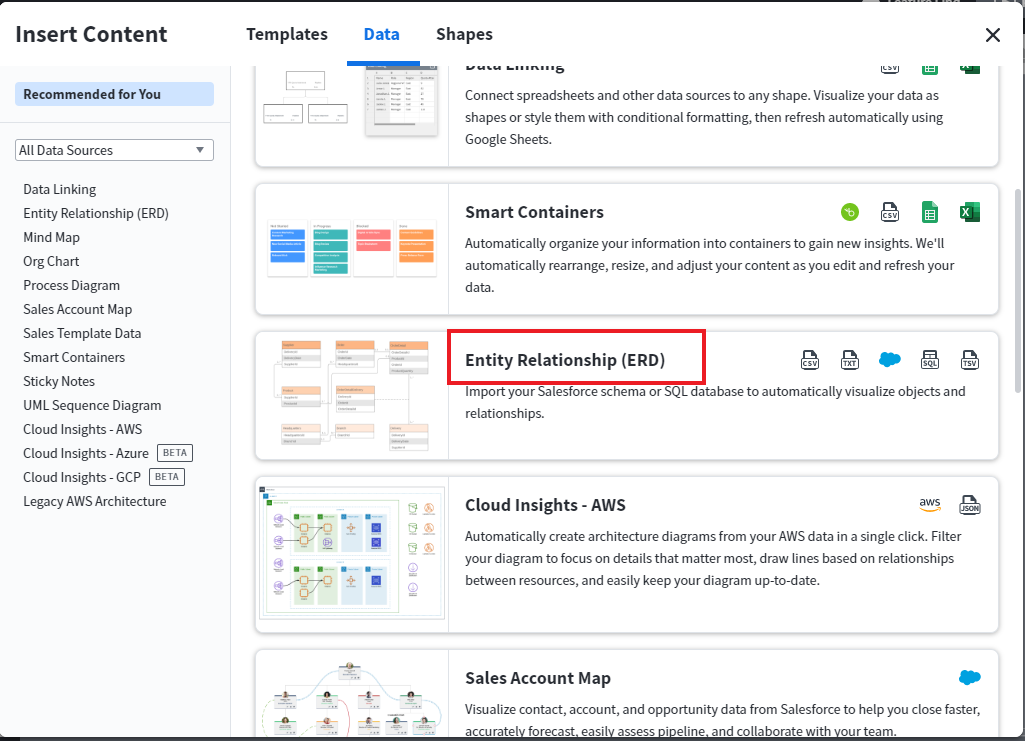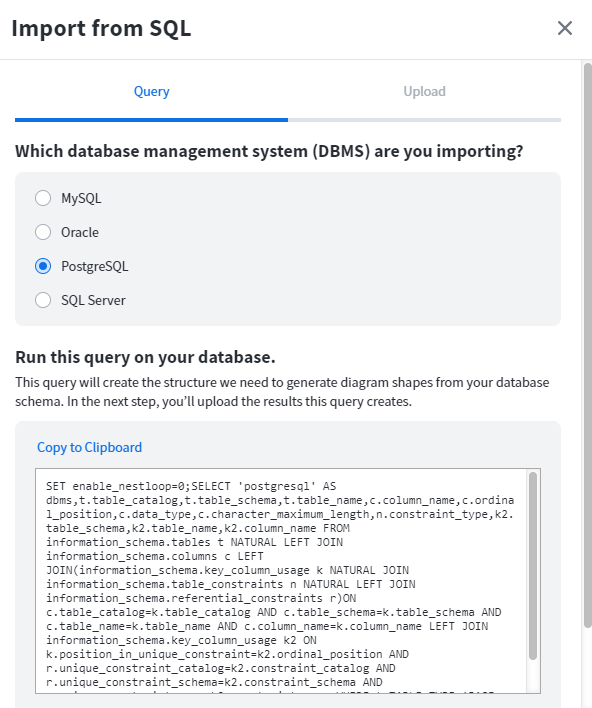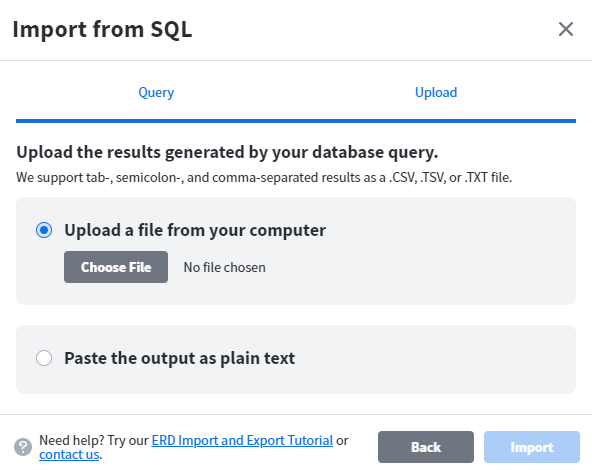I see mention of CSV & Text in ERD Import but these options are not available to me when I click on import your data button. Are these options available and if so then how to use them?
My Requirement: I want to create simple CDM (Conceptual data Model) and LDM (Logical Data Model) with simple text or csv import. Example in another tool that I am using they have option to create CDM diagram with simple text inputs like these-
A->Submits(1:M)->B
A->Participats in (1:M)->C
I want to use inputs like below in excel to create diagram:
| DataEntityFrom | DataEntityTo | DataEntityToRole | Relation Multiplicity Type |
Relation Description |
| A | B | Submits | 1:M | TBA |
| A | C | Participats in | 1:M | TBA |
